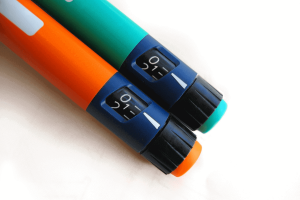How does exercise impact my blood sugar?
Blood sugar and exercise often go hand-in-hand, especially when you’re working to control your weight and your diabetes symptoms. While regular exercise is a crucial part of helping you manage your diabetes, people with diabetes need to take a few extra steps to prevent unhealthy blood sugar levels before and after working out. Here are a few steps you can take to stay safe before lacing up your sneakers and hitting the gym.
Before you exercise:
- Talk to your doctor to make sure you are healthy enough for exercise. If your goal is to lose weight, your doctor can recommend a plan that will help you meet your goal in a healthy way.
- Check your blood sugar. According to the Mayo Clinic, a blood glucose level lower than 100 mg/dL is too low to exercise safely. Doctors recommend eating a small carbohydrate-based snack, such as an apple or crackers with cheese or peanut butter before you exercise. A blood glucose reading above 250 mg/dL is considered too high to exercise safely, putting you at risk for a condition called ketoacidosis. This complication occurs when your body doesn’t have enough insulin to control your blood sugar. Physicians at the Mayo Clinic recommend waiting until your blood sugar falls into a healthier range before beginning exercise.
- According to the Joslin Diabetes Center, you should check your blood glucose during your workout if you plan to exercise for more than 30 minutes. If your blood sugar drops below 70 mg/dL, or if you feel shaky or confused, stop exercising immediately. Doctors at the Mayo Clinic recommend eating something to raise your blood sugar, such as glucose tablets or fruit juice.
- Always remember to drink plenty of fluids during your workout. In addition to a water bottle, take an emergency snack with you when you exercise. Foods such as hard candies or fruit juices will help raise your blood sugar when you need it.
- Check your blood sugar again. Don’t be alarmed if your blood sugar is higher than normal. The Joslin Diabetes Center says blood sugar levels may increase during exercise, because your muscles need more glucose for energy. If your body doesn’t have enough insulin available to use this glucose, your blood sugar tends to spike.
- If your blood sugar is low after your workout, eat a small carbohydrate-based snack. A small piece of fruit or crackers will help get your body back on track.
- The American Diabetes Association recommends adults get 150 minutes of physical activity each week. The more you exercise, the more your blood sugar will be impacted. If you work out for more than an hour, your blood sugar levels may be affected for several hours after you finish exercising.




